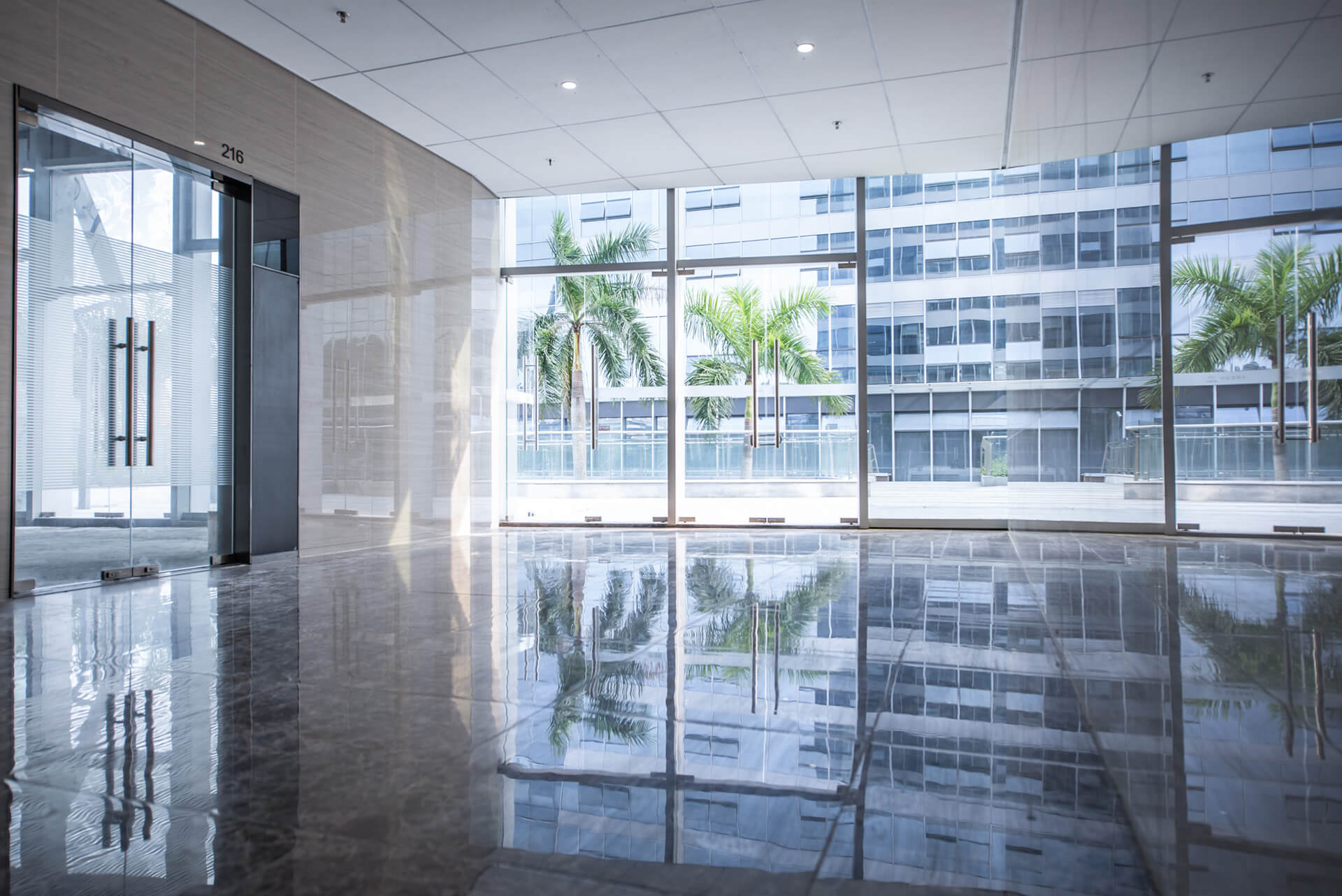
How the Pandemic Positioned Healthy Buildings as a Public Health Imperative
Discussions about healthy buildings are becoming increasingly relevant in conversations about changes brought on by the COVID-19 pandemic. Throughout history, wars, famines, plagues, and natural disasters have all challenged the human species. At every turn, humans have proven their adaptability, problem-solving abilities, and determination not only to survive but to grow, learn, and emerge better in the end. By placing the current COVID crisis in the context of past public health challenges humans have faced, we can appreciate the increasing need to ensure that we imbue our natural habitats – indoor environments – with healthy buildings principles.
Public Health Challenges throughout History
Positive changes driven by human beings who responded to life-altering events populate the historical record. Look no further than the bubonic plague of the Middle Ages for the origins of social distancing and masking. During the plague known as the Black Death, plague doctors wore a long overcoat with full sleeves, gloves, boots, and a bird-like mask. The beak of the mask was filled with sweet or strong-smelling substances such as roses, mint, or sponges saturated with camphor or vinegar. At the time, the doctors believed that illness came from “evil” smells that emanated from those who were infected or had died from the disease. While somewhat inaccurate, the concept of guarding against infection with coverings ultimately became a standard of medical practice.
As far back as the 4th century BC, people favored a white paint for homes and public buildings. Unfortunately, craftsmen added lead to paint to improve thickness and opacity. As early as the Middle Ages, texts warned of the dangers the paint posed, relating its use to apoplexy, paralysis, or epilepsy. The use of white leaded paint reached a peak in the U.S. in the 1800s, but its use continued into the late 20th century. Despite its popularity, people began demanding bans on lead-based paint. The call for change began in the 1960s as researchers linked lead poisoning from paint chips and dust in older homes to increasing levels of birth defects and disabilities in very young children. In 1977, the U.S. Consumer Product Safety Commission successfully banned lead-based paint.
In 1918, the misnamed “Spanish Flu” epidemic triggered a premature end to World War I because of the loss of life significantly impacting men of age for military service. Conditions of trench warfare in Europe left soldiers from every involved country as targets for the deadly flu virus, and armies couldn’t fill quotas for recruits for their militaries to fight in the war. In order to respond to the demands created by the loss of life due to the virus, changes were required. The public demanded changes to societal norms and healthcare practices in order to protect against the repeated waves of this virulent illness. Among the most well-known corrections resulting from this crisis was the emphasis on routine hand-washing and isolating those who were ill from those who were healthy.
Modern Approaches to Public Health and Healthy Buildings
Modern day public health and healthcare systems evolved in response to the unprecedented needs created by the 1918 pandemic. A network of laboratories popped up around the world to test influenza specimens for a faster understanding of pandemic outbreaks. States across the U.S. developed preparedness plans for sharing stockpiles of antiviral medications and vaccines so that individual states would not be caught off-guard.
Now, once again, the world finds itself in the grip of a pandemic. In 2020, human beings started a demand that more be done to protect the wellbeing of those who use indoor public spaces such as offices and apartment buildings, hospitals, clinics, and long-term care facilities. As people learn more about how unhealthy viruses, germs, and bacteria spread, they are demanding changes in how cleaning and disinfection of shared spaces are managed. The demand for healthy indoor spaces has become one of the rallying cries of recent years.
The Origins of Healthy Buildings Efforts
The concept of healthy and safe buildings is not new. The first recorded building code dates to 1772 BC when the Babylonian King Hammurabi identifies how and where buildings should be created for the safety of the community. In 1909, Austria and Belgium became the first countries to ban lead-based house paint after public pressure alerted them to the dangers. The Clean Water Act became law in 1972 after public outrage over pollution oil spills motivated the U.S. Congress to override President Richard Nixon’s veto.
The movement continued to grow in 1987 when Helmut Ziehe, a graduate of the original Baubiologie training and Architect from Germany, introduced “building biology” to the United States. Additional milestones in the movement show a continuing desire of people around the world for safer, healthier indoor environments. Today, the healthy buildings movement is becoming the standard, motivated in part by Harvard University’s T.H. Chan School of Public Health and outspoken champion Dr. Joseph G. Allen.
Professor Allen has become one of the leading voices in the Healthy Buildings movement. He and his colleagues dedicate their time to establish a standard for buildings that will ensure they meet a level of environmental health benefiting all occupants. After many interactions over the past several years with real estate professionals, building owners, hospital administrators, facilities directors, homeowners, and academic colleagues, Allen helped to develop the “Nine Foundations of Healthy Buildings.” These foundations include Ventilation, Air Quality, Thermal Health, Moisture, Dust & Pests, Safety & Security, Water Quality, Noise, Lighting & Views.
Healthy Buildings and Indoor Air Quality
For R-Zero, the first two foundations are most critical to our business and where we believe we can have the greatest impact on improving indoor air quality. In President Biden’s recently released statement concerning the National COVID-19 Preparedness Plan, he announced plans for the Clean Air in Buildings Challenge, a key component of which calls on all building owners and operators, schools, colleges and universities, and organizations of all kinds to adopt key strategies to improve air quality in their buildings and reduce the spread of COVID-19.
According to a release from the Biden-Harris administration, “The Clean Air in Buildings Challenge is a call to action for leaders and building owners and operators of all types to assess their indoor air quality and make ventilation and air filtration improvements to help keep occupants safe.” As part of the Challenge, the Environmental Protection Agency (EPA) published a best practices guide for improving indoor air quality and reducing the risk of spreading dangerous airborne particles.
The initial focus of the Healthy Buildings movement identified ventilation and clean air in terms of HVAC and filtration. However, attention is now shifting to include the benefits of UV-C disinfection, as well. Both the FDA and CDC have identified UV-C as a valuable component in the drive toward cleaner indoor air. The FDA is paying close attention to manufacturers of UV-C devices, their safety, and the claims made by manufacturers to ensure they comply with regulations that have been established for the safe use of UV-C in public spaces.
Energy efficiency once held the number one spot of concern for building owners and operators. Going green equated to owners and managers caring for the environment and demonstrating respect for the concerns of their employees and tenants. While energy efficiency is still an important consideration, the last two years have demonstrated that there needs to be equal concern for healthy indoor environments as well. A growing number of studies show a link between indoor air quality and issues such as job performance, the mental health of employees, and student performance.
New support coming from the White House for improving indoor air quality encourages continued study of this subject. The link between the rapid spread of illness and ventilation in buildings is already one of the fastest-growing topics of research. As we learn more about the importance of healthy indoor air, the market for products and services is growing quickly, as well. By some estimates, that growth could be as much as $9.5 billion just between 2020 and 2025. As tenants, employees, and occupants continue to push for healthier indoor environments, builders and facilities managers will need to find more innovative tools and methods for ensuring those demands are met.
The real success stories of the post-pandemic future will be the companies that can deliver on the promises of better indoor air quality while also ensuring the energy efficiency that remains a top priority. R-Zero is poised to be among the leaders in UV-C technology for many years to come because of our exacting standards, verification by third-party sources, and our commitment to enabling safer indoor environments. We are proud to be part of the Healthy Buildings movement, and we look forward to the continued improvements in creating safer shared spaces for everyone.
More posts you might like
-
Creating Energy-Efficient Outcomes for Your Buildings
Q&A with R-Zero’s Matt Arneson In honor of Earth Month, we sat down with our in-house expert in energy efficiency, Matt Arneson, to learn more about how customers can drive sustainable outcomes across their buildings. Climate disclosure regulations, both domestic and international, seem to be in the news every week. Are building developers, owners, and […]
-
A Conversation with FEA President and COO Laurie Gilmer on Effective Facility Management
R-Zero recently connected with Laurie Gilmer, President and COO at Facility Engineering Associates (FEA) and former chair of the International Facility Management Association (IFMA), to discuss actionable ways that facility managers can improve their building performance and increase their energy savings. Through her work at the FEA, Laurie mentors facility managers on strategies to best […]
-
Finding Your Fit in the Sensing Maturity Model
The way we do business changes quickly, but the spaces in which we conduct that business do not. Hybrid work models, changing workforce preferences, operational priorities, and rising energy costs, have all fundamentally changed the way we use and think about our buildings and our workspaces. Thankfully, sensing technologies offer an easy and accessible solution […]


